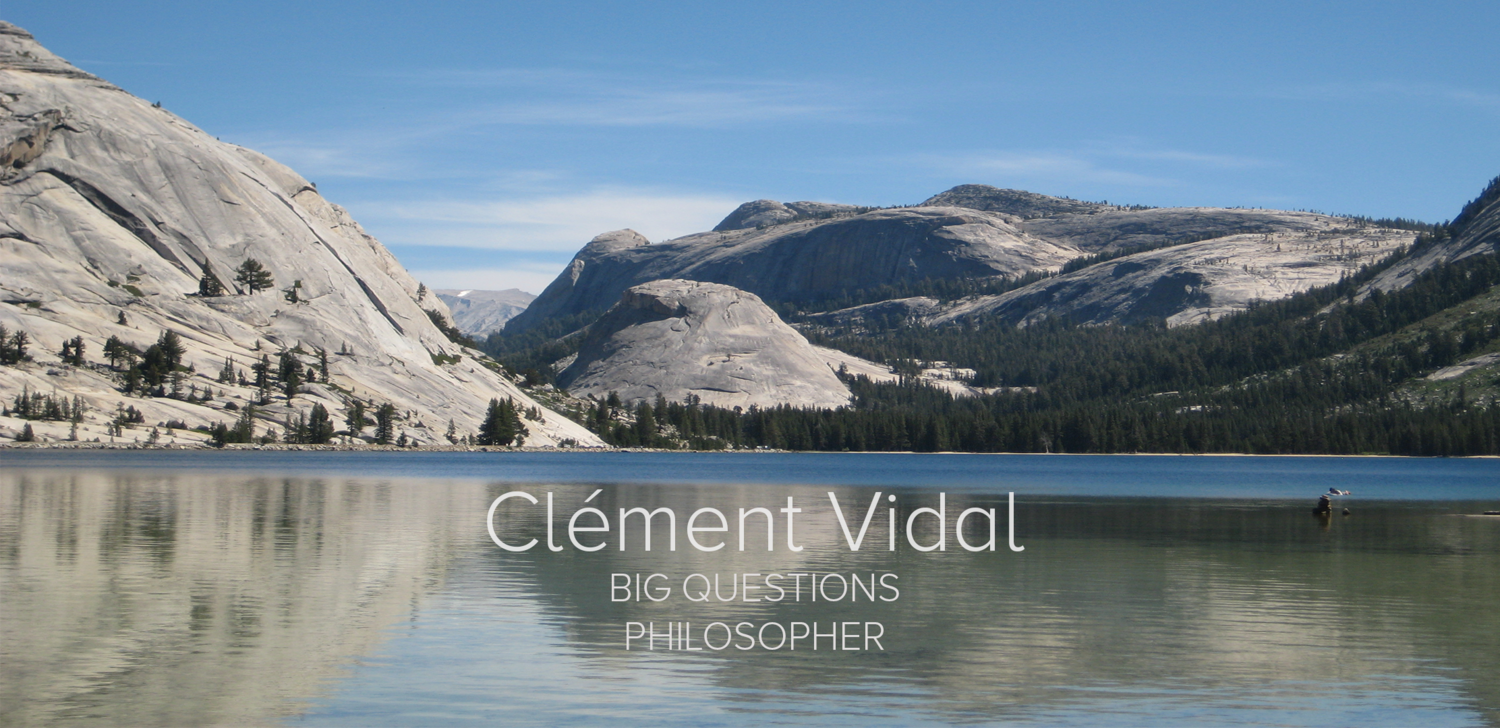Table of contents of: The Beginning and the End: The Meaning of Life in a Cosmological Perspective. Springer, 2014.
Part I Overview of Worldviews
1 The Six Dimensions of Philosophy
1.1 First-Order Questions
1.2 Second-Order Questions
1.3 Necessity to Have a Worldview
1.4 Implicit and Explicit Worldviews
1.5 A Cybernetic Model of a Worldview
2 Criteria for Worldview Comparison
2.1 A Quest for Criteria
2.1.1 Metaphilosophy
2.1.2 The Big Three
2.1.3 Bootstrapping the Criteria
2.1.4 Relativity, not Relativism
2.2 Criteria for Worldview Comparison
2.2.1 ObjectiveConsistency
2.2.2 Scientificity
2.2.3 Scope
2.2.4 Subjective Consistency
2.2.5 Personal Utility
2.2.6 Emotionality
2.2.7 Intersubjective Consistency
2.2.8 Collective Utility
2.2.9 Narrativity
2.3 Assessment Tests
2.3.1 Testing the Components
2.3.2 Testing the Dimensions
2.3.3 Testing the Big Three
2.3.4 Summary
3 Religious, Scientific, and Philosophical Worldviews
3.1 Religious Worldviews
3.1.1 Intelligent Design Versus Flying Spaghetti Monsterism
3.1.2 Psychological and Societal Strengths of Religions
3.1.3 Failures of Tradition
3.2 Scientific Worldviews
3.2.1 Systems Theory as a Universal Language for Science
3.2.2 Problem-Solving Approach
3.2.3 Universal Darwinism
3.2.4 Limitations of Scientific Worldviews
3.3 Philosophical Worldviews
3.3.1 The Way to Philosophical Worldviews
3.3.2 One or Several Worldviews?
3.3.3 Analogies for Philosophical Worldviews
3.3.4 Nonviolent Worldview Communication
3.3.5 The Extreme Worldview Agenda
Open Questions
Part II The Beginning of the Universe
4 Origins of the Origin
4.1 Five Challenges for Ultimate Explanations
4.1.1 Epistemological
4.1.2 Metaphysical
4.1.3 Thermodynamic
4.1.4 Causal
4.1.5 Infinity
4.2 The Point as a Cognitive Attractor
4.2.1 Origin with Foundation
4.2.2 Points in Everyday Life
4.2.3 God’s Point
4.2.4 Big Bang’s Point
4.3 The Cycle as a Cognitive Attractor
4.3.1 Origin Without Foundation
4.3.2 Cycles in Everyday Life
4.3.3 Big Bang(s) Cycles
4.3.4 Objections Against Cycles
4.4 Points, Cycles and Beyond
4.4.1 More Attractors
4.4.2 Line and Combinations
4.4.3 Cosmological Models
5 Capturing Free Parameters
5.1 Analogical Reasoning in Science
5.2 The Physical Universe
5.3 The Mathematical Universe
5.4 The Computational Universe
5.5 The Biological Universe
6 The Fine-Tuning Conjecture
6.1 Fine-Tuning Fallacies
6.1.1 Probabilistic Fallacies
6.1.2 Physical Fallacies
6.1.3 Fine-Tuning Disproofs
6.2 Fine-Tuning and Other Issues
6.2.1 Fine-Tuning and Free Parameters
6.2.2 Fine-Tuning and Parameter Sensitivity
6.2.3 Fine-Tuning and Metaphysical Issues
6.2.4 Fine-Tuning and Anthropic Principles
6.2.5 Fine-Tuning and Observational Selection Effects
6.2.6 Fine-Tuning and Teleology
6.2.7 Fine-Tuning and God’s Existence
6.3 The Cosmic Evolution Equation
6.3.1 Possible Universes
6.3.2 Possible Cosmic Outcomes
6.3.3 Robustness in Cosmic Evolution
6.3.4 Artificial Cosmogenesis
6.3.5 Summary
6.4 Classical Fine-Tuning Explanations
6.4.1 Skepticism
6.4.2 Necessity
6.4.3 Fecundity
6.4.4 God of the Gaps
6.4.5 Chance of the Gaps
6.4.6 WAP of the Gaps
6.4.7 Multiverse
6.4.8 Design
Conclusion
Part III Our Future in the Universe
7 The Future of Scientific Simulations
7.1 Toward a Simulation of an Entire Universe
7.2 Increase of Computing Resources
7.3 Bridging Gaps in Cosmic Evolution
7.4 Replaying the Tape of the Universe
7.5 Real-World and Artificial-World Modeling
7.6 The Simulation Hypothesis
Open Questions
8 Cosmological Selections
8.1 Evolutionary Selection
8.1.1 Biological Selection
8.1.2 Cosmological Selection
8.1.3 Biological and Cosmological Fitness
8.2 Cosmological Natural Selection
8.2.1 History
8.2.2 Theory
8.2.3 Objections
8.3 Cosmological Artificial Selection
8.3.1 History
8.3.2 From Natural to Artificial Cosmological Selection
8.3.3 Six Levels of Universe Making
8.3.4 Objection:Design and Creation
8.3.5 Objection: CAS versus other Fine-Tuning Explanations
8.3.6 Objection:The Causal Issue
8.3.7 Objection: The Thermodynamic Issue
8.3.8 Objection: Epistemological Issues—Science or Philosophy?
8.3.9 Objection: Are Simulation and Realization Possible?
8.3.10 Objection: What Motivation?
8.3.11 Objection: No Freedom in CAS?
8.3.12 Four Roads to Cosmological Artificial Selection
8.3.13 The Case for CAS
9 High Energy Astrobiology
9.1 Criteria for Artificiality
9.1.1 What is Your Methodological Fallacy?
9.1.2 Zen SETI
9.1.3 The Case for Postbiology
9.1.4 Global Criteria
9.1.5 Thermodynamic Criteria
9.1.6 Living Systems Criteria
9.2 Two Scales for Civilizational Development
9.2.1 Kardashev Scale: The Energetic Increase
9.2.2 Barrow Scale: The Inward Manipulation
9.3 Black Holes as Attractors for Intelligence
9.3.1 Unknown Black Hole Technology
9.3.2 Energetic
9.3.3 Societal
9.3.4 Scientific
9.3.5 Computational
9.3.6 Philosophical
9.4 Signs of Starivores?
9.4.1 Two Scales Argument
9.4.2 A Partial Visit to the Binary Zoo
9.4.3 General Arguments
9.4.4 Thermodynamic Arguments
9.4.5 Living Systems Arguments
9.4.6 Are Pulsars Artificial Output Transducers?
9.5 Objections
9.5.1 Is it New?
9.5.2 Dyson Spheres Versus Starivores
9.5.3 Are all Binaries Extraterrestrial Life?
9.5.4 Postbiology? Are You Serious?
9.5.5 Is High Temperature Livable?
9.5.6 Will We Become Starivores?
9.5.7 Starivores’ Missing Mass
9.5.8 The Explosive Objection
9.5.9 The Candle Objection
9.5.10 The Fridge Objection
9.6 Conclusion
Open Questions
10 Cosmological Ethics and Immortality
10.1 Thermodynamic Values
10.1.1 Information Ethics
10.1.2 Thermodynamic Ethics
10.2 Evolutionary Values
10.2.1 The Fallacious Naturalistic Fallacy
10.2.2 Egoism–Altruism Trade-off
10.2.3 Stability–Adaptability Trade-off
10.2.4 Specialist–Generalist Trade-off
10.2.5 Exploration–Exploitation Trade-off
10.2.6 Competition–Cooperation Trade-off
10.2.7 r-K Selection Trade-off
10.2.8 Discussion
10.3 Developmental Values
10.3.1 Cybernetic Values
10.3.2 Progress in Evolutionary Progress
10.3.3 Developmental Values for Humans
10.3.4 Developmental Values for Societies
10.3.5 Universal Thermodynamic Evolutionary Developmental Values?
10.4 Voyage to Five Immortalities
10.4.1 Spiritual Immortality
10.4.2 Individual Immortality
10.4.3 Creative Immortality
10.4.4 Evolutionary Immortality
10.4.5 Cosmological Immortality
